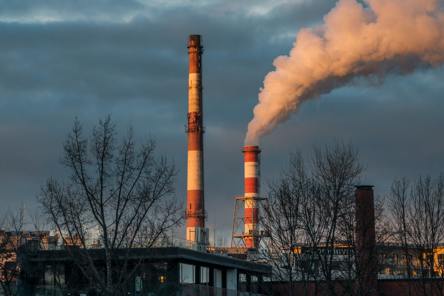Carbon footprint is a measure of the total greenhouse gases like carbon dioxide (CO2) produced by certain actions. In the context of logistics, carbon footprint looks at the gases generated when goods are transported around the world.
Moving cargo is a carbon-intensive undertaking. Powering long-distance delivery vehicles and freight transport demands a lot of energy. This energy is often sourced from non-renewables like coal. When coal is burnt, CO2 is released into the atmosphere. More than one-third of global CO2 emissions come from the logistics and transport sectors—they are the single largest emitting industries.
What does the logistics carbon footprint mean for the planet? It is a significant contributor to climate change. Climate change has put communities, animals, plant species, and entire ecosystems at risk. Weather has become more extreme, temperatures have risen worldwide, and many scientists hold bleak views of our future should we continue business as usual.
That's why embracing green supply chain practices is a step in the right direction. It's a way to build resilience, meet consumer expectations, fulfill our corporate responsibilities, and lead by example. Here at SEKO Logistics, we take this endeavor seriously.
What Are the Benefits of Green Supply Chain Practices?
Why is reducing carbon emissions in logistics important? A greener, more environmentally friendly supply chain can help your organization reduce its carbon footprint. That's one benefit, but there are more:
-
Sustainable logistics solutions save money. Initiatives like waste reduction and the adoption of renewable energy result in lower overheads and higher profit margins. In addition, practices like route optimization save on fuel and decrease shipping costs.
-
Regulations around the world are evolving to meet consumer expectations and address critical climate concerns. By embracing the green supply chain, you are better positioned to comply with global rules. In addition, you future-proof your approach. Looking ahead, it's likely carbon emissions will become more tightly regulated.
-
Consumers prefer to buy from businesses that align with their values. If you adopt green supply chain practices, you can win over environmentally conscious buyers. This keeps you one step ahead of the competition.
How Can Logistics Reduce Carbon Emissions?
Logistics companies can reduce carbon emissions in a number of ways:
-
Route optimization, which minimizes fuel consumption.
-
Fuel-efficient vehicles also cut down on the resources needed to deliver cargo.
-
Alternative and sustainable fuels, which reduce reliance on non-renewable and polluting resources.
Technology is integral to widespread adoption of these initiatives across the logistics industry:
-
Artificial intelligence (AI) compiles and analyzes huge datasets to identify the most efficient routes, predict maintenance needs, and reduce fuel consumption.
-
The Internet of Things (IoT) enables devices to share real-time information, optimizing vehicle performance and improving supply chain transparency for better decision-making.
-
Data analytics provides insights into fuel usage patterns, delivery times, operational inefficiencies, and bottlenecks.
How Does Carbon Footprint Reduction Align with Corporate Social Responsibility (CSR)?
Corporate social responsibility (CSR) is a business model. It ensures companies are accountable to the public, their stakeholders, and the environment. Businesses that adopt CSR work to make a positive impact on society while balancing profit.
There are four main categories of CSR:
-
Environmental
-
Ethical
-
Philanthropic
-
Economic
An organization can strengthen its corporate responsibility by reducing its carbon footprint with green supply chain practices.
What Challenges Exist When Reducing the Logistics Carbon Footprint?
Some of the main obstacles to emissions reductions include:
-
Investing in sustainable technologies like electric vehicles or fuel-efficient systems often requires a large upfront financial commitment.
-
Current infrastructure may not support the widespread use of electric or hybrid vehicles. Charging stations, for example, are not yet available in all areas.
-
Regulations around carbon emissions and sustainability are constantly changing. Keeping up with these can be challenging.
-
A single company's efforts may not make a significant impact without industry-wide collaboration. Standardizing sustainable practices will ensure all logistics companies move toward the same goal.
How Sustainable Transportation Solutions Can Overcome These Challenges
To overcome these challenges and move closer to truly carbon-neutral operations, logistics companies can leverage eco-friendly transportation solutions:
-
EVs produce almost zero emissions. While the initial cost of EVs is high, they offer lower long-term operational costs compared to traditional vehicles. This helps offset the upfront investment.
-
Hybrid vehicles combine traditional fuel with electric power. This cuts down on fuel consumption and emissions. Hybrid fleets provide a middle ground for companies not yet ready to switch fully to EVs.
-
Using a combination of transportation modes—such as trucks, trains, and ships—enables route optimization and reduces fuel usage and emissions.
How Is SEKO Logistics Leading the Way in Sustainable Logistics?
Here at SEKO, sustainability and carbon reduction strategies are part of our culture. It's what we stand for. That's why we've invested in green supply chain practices and tools to empower our clients to lower their environmental impact and lead the way in their industries.
Technology is a force for good in transportation and logistics, and innovations like the SEKO 360 Carbon Calculation—which measures carbon emissions based on shipment routes and volumes—enable our clients to make informed decisions that reduce their carbon footprints.
Plus, our US EPA SmartWay certification allows us to assess environmental and energy efficiency in supply chains. We've also joined the Sustainable Air Freight Alliance.
Let's work together to build a greener world—one delivery at a time. To learn more about our sustainability initiatives and how we can power your business's growth, please reach out to our team.





